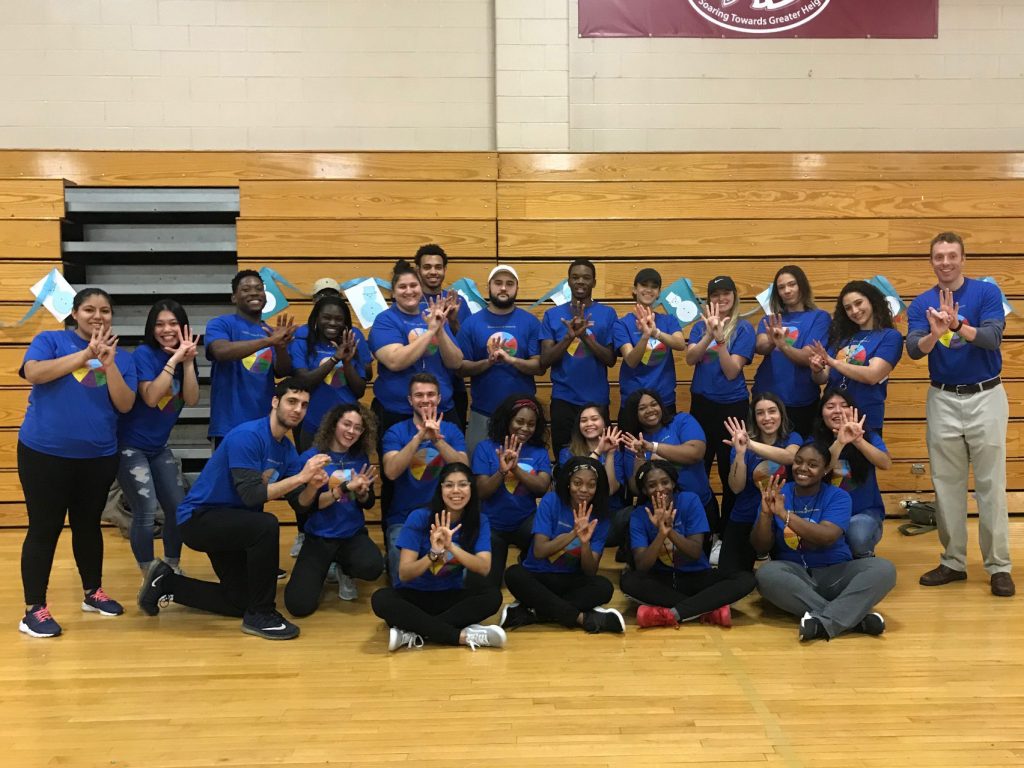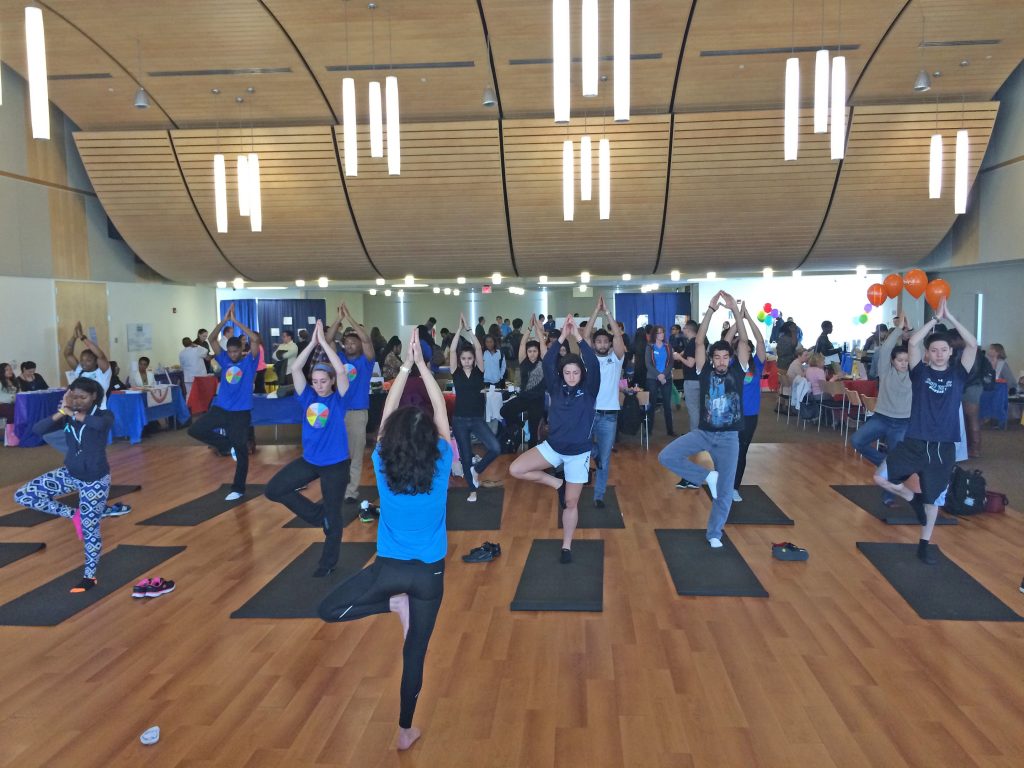Stephanie Bryan, Ph.D., associate professor and chair of the health and physical education department at Saint Peter’s University, has a goal to raise awareness for healthy living and eating. She is an exercise physiologist who started her career as a fitness instructor when she was 18. She has degrees in adult fitness, exercise science and health science. She developed the physical education program at Saint Peter’s University, where she is a member of the faculty. Her latest endeavor focuses on a program that teaches mindfulness meditation as a means of reducing stress and managing behavior for high school and middle school students. She is on a mission to change behaviors though mindfulness so that people can sustain healthy living lifestyles.
Q. Your work with local high school and middle school students is fantastic; can you say more about these programs?

Saint Peter’s Students Provided Health and Fitness Games for the Students and Families of PS 17
A. I am using my knowledge to serve the community and bringing families opportunities to exercise together. For example, through a grant, I have been able to host events with students where we have raffled off bicycles, given away crock-pots with vegetable-rich recipes and bought fitness equipment for youngsters. In addition, I talk to the families about nutrition and disease prevention. I educate them on eating more fruits and vegetables and having nutrient dense, immune enhancing meals. We hand out plates that show proper nutritional portioning—fruits and vegetables should make up 50 percent of your diet.
Q. How has the program evolved? Are there plans for growth?
A. At a local Jersey City school, the students are so stressed. I look to teach them to become less reactive through meditation, which is known to change the structure and functionality of your brain. Meditation allows you to be less reactive, and it improves cognition, emotional stability and reduces anxiety and stress. So much can be accomplished by meditating; 5-10 minutes of seated meditation once a day can change everything. In addition, Plainfield school district is interested in developing a program for students who are in detention or suspension. The goal for both of these schools is to take a proactive approach to health.
To view meditation videos Dr. Bryan created for these students, click here.
Q. How would you define mindful mediation and how do you teach it to others?
A. Mindfulness brings attention to the current moment or the essence of being; you exist without judgment. You may have a thought but you do not asses that thought and just experience the phenomena of being. You can do that in the meditative sense when you bring attention to sensations in your body. It is a way of directing your focus. It is the practice of activating your brain like a muscle. It lays down pathways in your brain, like a roadway that can bring your attention to or away from something. It creates pathways that you can then activate during stressful times, such as traffic. Through meditation, you can become less reactive because you have practiced being less reactive.
Q. What do you teach your university-level students?
A. In one of my classes about complementary therapies, I teach the same concepts I just discussed. We discuss the scientific evidence of mindful meditation and gentle yoga. We meditate every class. In addition, the class reads scientific literature, keeps a gratitude journal and completes a research paper. The class combines study and practice.
Q. What practical advice do you have that people can start practicing right now?
A. Move. If you move, it results in the release of feel-good chemicals. Just walking makes you feel good and it is free! Other practices that can help people cope are reading, meditation, friend groups, a bubble bath, etc. Understand what makes you well and do those things.

Dr. Bryan Leads Yoga Practice at a Family Health and Fitness Fair
Q. What is your favorite yoga pose?
A. Let me start by saying, I do not have a favorite, but there is real value to tree pose. It is a balance posture and it brings awareness to both sides of your body. There is a value in this because as humans, we need to be bilateral and give strength to both left and right sides. Additionally, in this pose, you use a focal point and you are able to leave your body when you are focusing on balancing. This pose also gives you a powerful ability to direct your brain and be steady from the inside; it creates a peaceful energy but it is still challenging.
